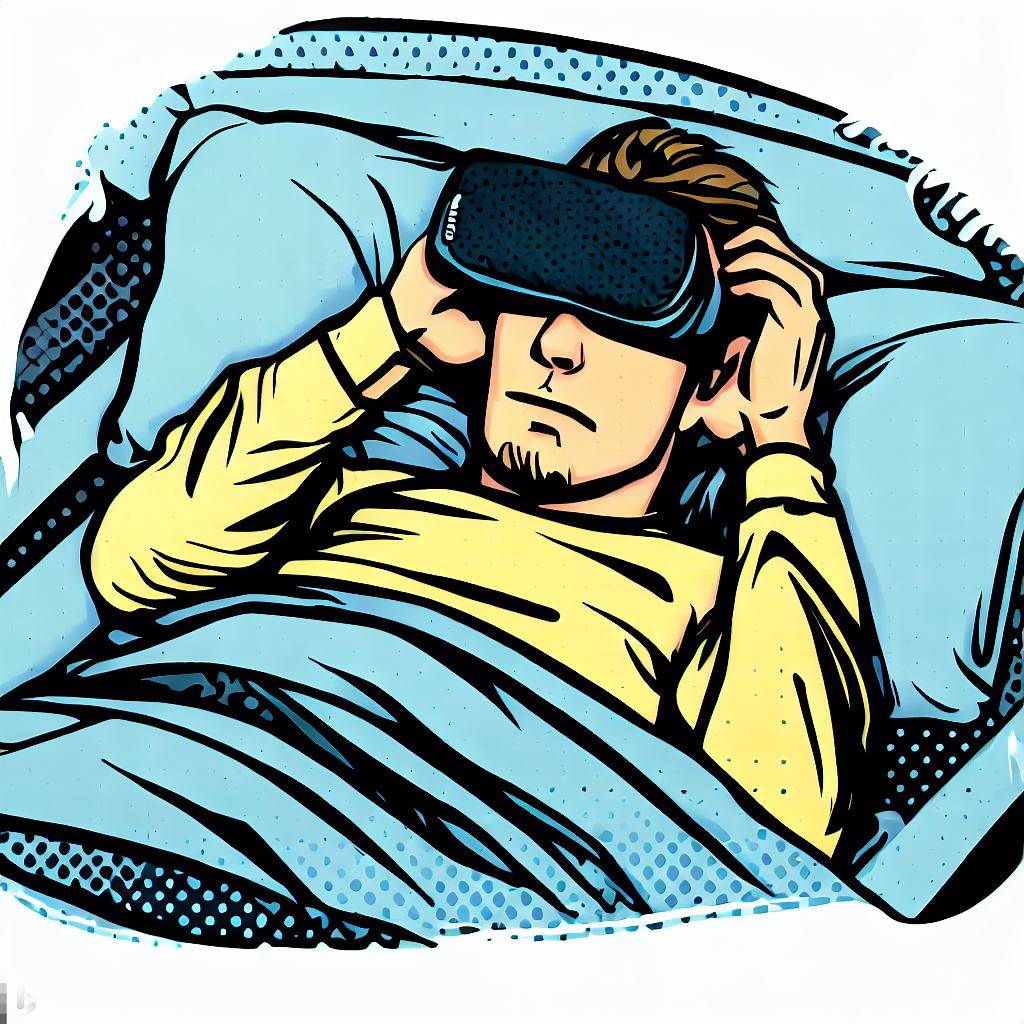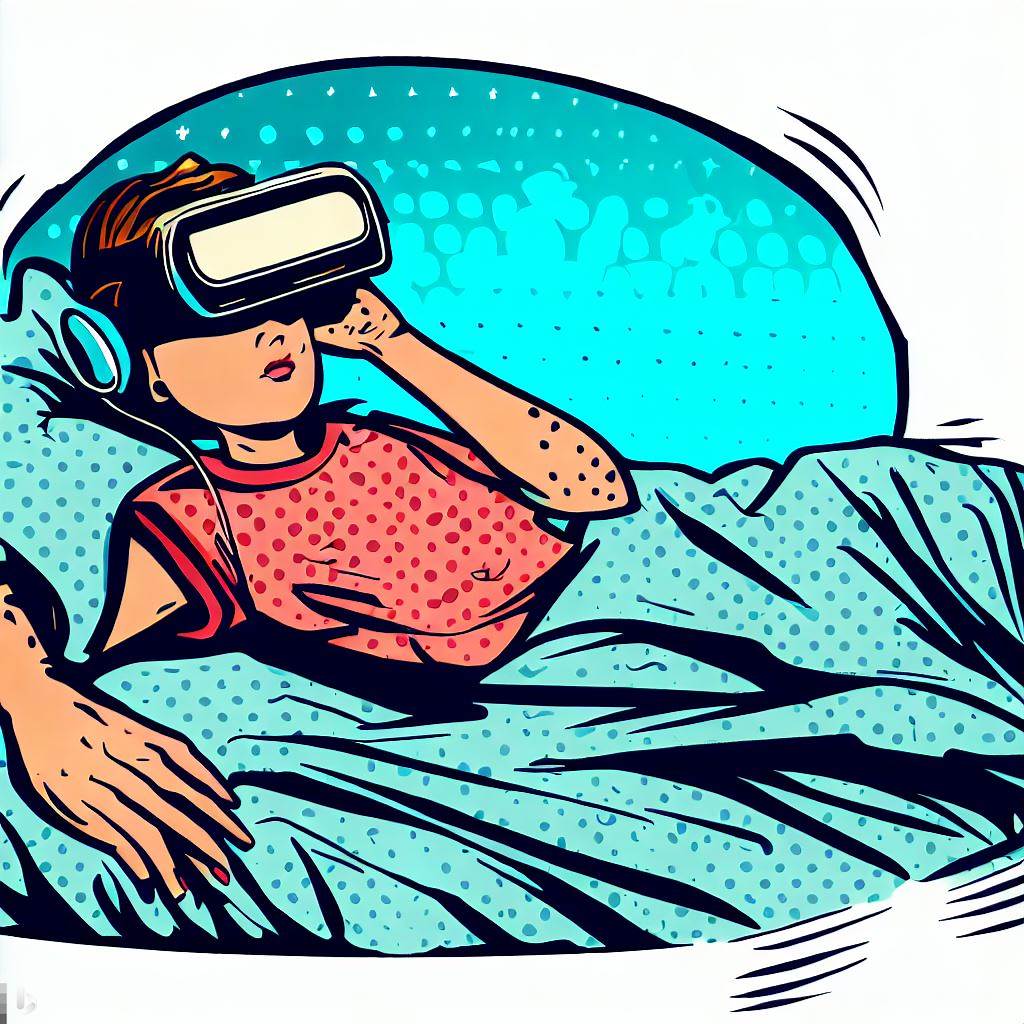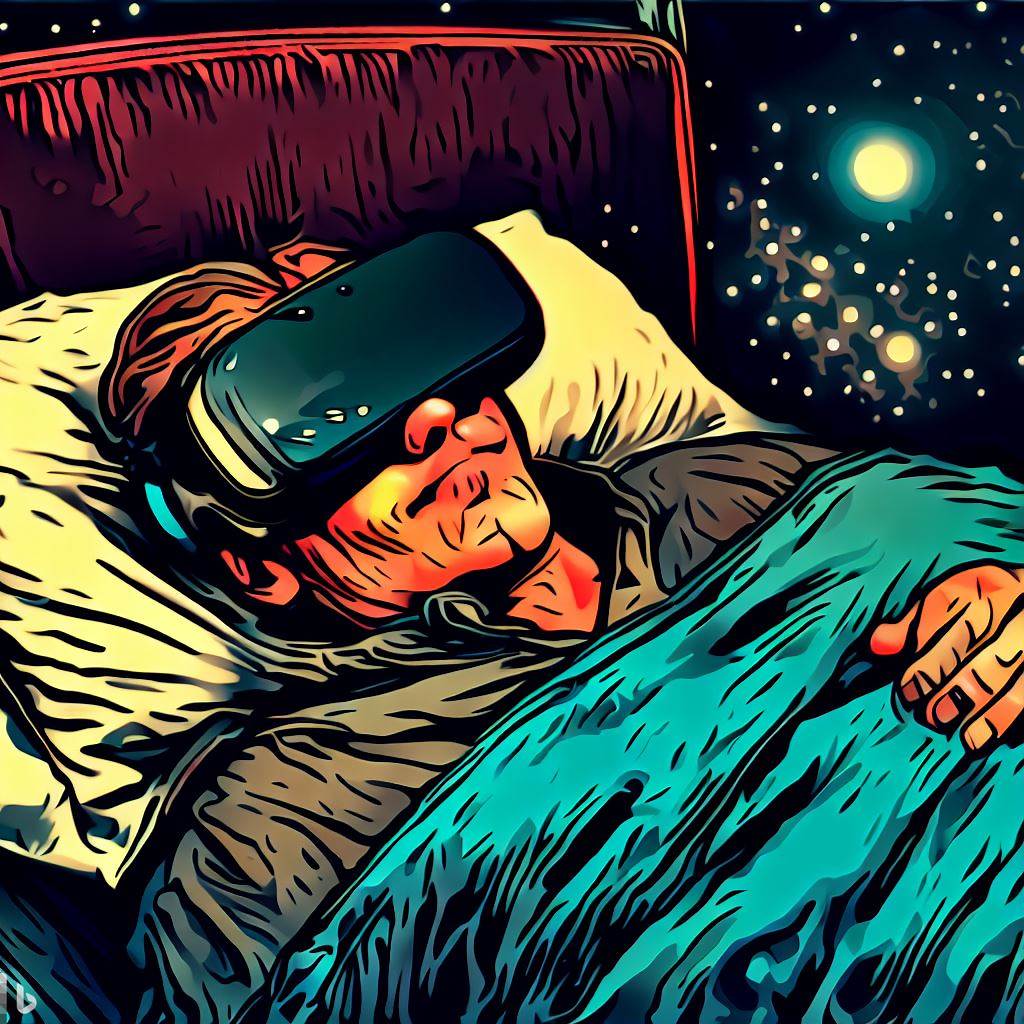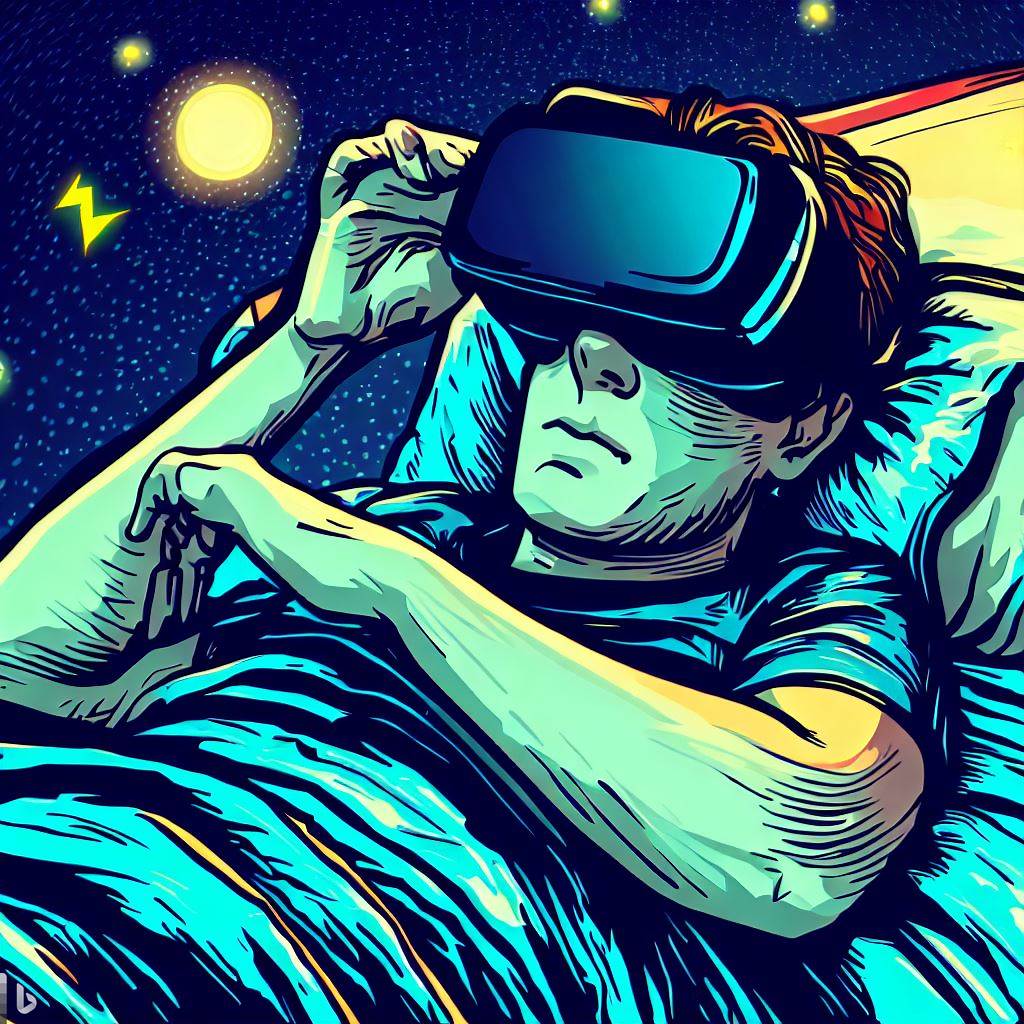Yes, you can sleep in VR, but the quality of your sleep may not be as restorative as it is in the real world. While it can be a unique and exciting experience, it’s important to prioritize your safety and well-being by following some simple guidelines.
Welcome, dear reader, to the virtual world of slumber! If you’ve ever found yourself immersed in the fascinating realm of virtual reality, you might have wondered, “Can you sleep in VR?” 🤔 Well, buckle up, because we’re about to dive into this mind-boggling question and uncover the astonishing truth about catching Z’s in the digital universe.
In this eye-opening article, we’ll tackle everything you need to know about snoozing in VR. From bizarre bedtime stories to the potential risks and benefits, we’ve got you covered. So, let’s embark on this wild adventure together and explore the unbelievable world of virtual slumbers! But be warned: this journey might just keep you up at night. 🌙😉
Ready to dive into the world of virtual snoozing? Grab your VR headset and a cozy pillow, and let’s get started! 🎮🛌
The Art of Virtual Napping: Can You Really Doze Off in VR?

Let’s face it, we’ve all experienced that irresistible urge to catch a few winks, whether it’s during a long-haul flight or a never-ending meeting. But the million-dollar question remains: Can you actually doze off in VR? 🤷
Well, you adventurous virtual explorers, the answer is a resounding “yes“! But before you celebrate with a victory dance, it’s crucial to understand that napping in VR isn’t as straightforward as it may seem. So, let’s dive into the nitty-gritty of virtual napping, shall we? 💤🔍
The Virtual Nap Setup:
First things first, you’ll need to create a comfortable environment for your VR snooze session. That means finding a cozy spot (your bed, couch, or even a bean bag chair will do) and making sure your VR headset is snug but not too tight. Remember, comfort is key! 🛋️
Choosing Your Virtual Sleep Sanctuary:
Once you’re all settled in, it’s time to pick the perfect virtual environment for your nap. This could be anything from a serene beach 🏖️ to a tranquil forest 🌲, or even a cozy log cabin! Just be sure to choose a VR experience that promotes relaxation, and avoid anything too stimulating (sorry, zombie apocalypse fans). 😅
Zoning Out:
Now that you’ve found your ideal virtual sleep haven, it’s time to relax and let go. Focus on your breath and allow your body to unwind. If you need some extra help, try incorporating calming background sounds or guided meditations into your VR experience. 🧘♂️🎧
The Catch:
While it is possible to doze off in VR, it’s important to note that the quality of your sleep might not be top-notch. 😬 You see, your brain can still detect the presence of the VR headset, and this could potentially disrupt your sleep patterns. That being said, a virtual nap can still provide a quick energy boost – just don’t expect it to replace a full night’s rest in the real world! 🌍
The Science Behind Sleeping in Virtual Reality: What Happens to Your Brain?

Ah, the human brain – that wonderfully complex organ, always surprising us with its intricate workings. But what exactly happens when we attempt to catch some z’s in the virtual world? Let’s put on our lab coats and delve into the fascinating science of sleeping in VR. 🔎👩🔬
Your Brain on VR Sleep: A Tale of Two States
When you fall asleep in VR, your brain enters a unique dual-state. It’s a bizarre blend of being aware of the virtual environment and experiencing the typical stages of sleep. Here’s a quick breakdown of how this works:
- Stage 1: 💤 The Transitional Phase – As you drift off, your brain remains somewhat alert to the virtual environment. It’s a light sleep, and you can be easily awakened.
- Stage 2: 😴 The Deepening Slumber – During this phase, your brain starts to disconnect from the virtual stimuli. It enters a deeper sleep, characterized by a drop in body temperature and heart rate.
- Stages 3 & 4: 🌙 The Deepest Sleep – As you reach these stages, your brain enters a restorative mode. It’s the time when your body repairs itself and restores energy. However, the presence of the VR headset may cause some disruptions, preventing you from reaching the deepest levels of sleep.
- REM Sleep: 💭 The Dream Stage – This is when the magic happens! Your brain becomes highly active, and you enter the dream stage. But here’s the catch: the virtual stimuli can potentially interfere with your dreams, leading to some wild and unpredictable adventures in your sleep.
The Peculiar Side Effects of VR Sleep
Sleeping in VR can have some, well, interesting side effects. For instance, some users have reported vivid and bizarre dreams that seem to merge elements from the virtual world with their own subconscious. Talk about a mind-bending experience! 🤯
Additionally, your brain might struggle to differentiate between the virtual environment and reality, causing a sense of disorientation upon waking up. So, be prepared for a possible “Where am I?” moment when you come back to the real world. 🌍😵💫
In conclusion, sleeping in VR can be a truly unique experience, both for your brain and your subconscious mind. Just remember that while it might be an exciting experiment, it shouldn’t become a regular habit. After all, your brain deserves some quality shut-eye in the real world too! 🛌🌟
The Pros and Cons of Snoozing in the Digital Realm: Is It Worth It?

As with most things in life, there are two sides to the virtual snoozing coin. Before you dive headfirst into the world of VR napping, it’s essential to weigh the pros and cons. Let’s explore the advantages and drawbacks of catching some Z’s in the digital realm. 🌐💤
🌟 The Upsides: Embracing the Virtual Nap 🌟
- Customizable Sleep Environments: 🌄 With VR, you can handpick your dreamy sleep sanctuary. Whether you’re into lush forests, starlit skies, or soothing underwater landscapes, the choice is yours!
- Escapism: 🚀 For those moments when you need a break from the stress and chaos of everyday life, a virtual nap can provide the perfect escape. It’s like a mini-vacation for your mind!
- Meditative Benefits: 🧘♀️ Some VR experiences incorporate guided meditations and calming sounds, which can help you relax, destress, and achieve a state of mindfulness.
🚫 The Downsides: Proceed with Caution 🚫
- Disrupted Sleep Patterns: 😕 Wearing a VR headset can interfere with your natural sleep cycles, potentially resulting in a less restorative snooze.
- Disorientation: 🤪 When you wake up from a VR nap, you might feel disoriented or even experience a brief sense of reality confusion.
- Physical Discomfort: 😣 Long periods of wearing a VR headset can cause discomfort, especially if it’s not properly adjusted.
- Eye Strain and Fatigue: 👀 Prolonged exposure to VR can lead to eye strain and fatigue, which may outweigh the benefits of a quick nap.
- Potential for Addiction: 🎮 Some people might find the allure of the virtual world too tempting, leading to an unhealthy reliance on VR for relaxation and sleep.
So, is it worth it to snooze in the digital realm? Ultimately, the decision is yours. While there are definite perks to virtual napping, it’s crucial to consider the potential drawbacks and prioritize your health and well-being. Remember, moderation is key!
Staying Safe in Your Virtual Slumber: Tips for a Restful Night in VR

If you’ve decided to embark on the thrilling adventure of virtual snoozing, it’s essential to prioritize your safety and comfort. Here are some helpful tips to ensure a restful and enjoyable night in VR:
1. Choose the Right Headset: 🎮 Opt for a comfortable and lightweight VR headset that won’t cause unnecessary strain or discomfort. Look for adjustable straps and padding to ensure a secure fit.
2. Create a Cozy Sleep Space: 🛋️ Select a comfortable area for your virtual slumber, like a bed or a soft chair. Make sure there’s enough space around you to avoid any accidental bumps or collisions.
3. Set a Time Limit: ⏰ To minimize potential risks, set a timer or alarm to remind you to take breaks and limit the duration of your VR sleep session.
4. Pick a Relaxing Virtual Environment: 🌅 Choose a calming VR experience that promotes relaxation, such as nature scenes or soothing soundscapes. Avoid overly stimulating or intense environments.
5. Listen to Your Body: 🚦 Pay attention to any signs of discomfort or fatigue, and take breaks as needed. If you experience eye strain, headaches, or dizziness, remove the headset and give yourself time to recover.
6. Hydrate and Stretch: 💧 Make sure to stay hydrated and take regular breaks to stretch your body. This will help maintain your physical well-being during your VR slumber.
7. Keep It Infrequent: 📅 Treat virtual napping as an occasional experiment rather than a regular habit. Your body and mind need consistent, high-quality sleep in the real world to stay healthy.
By following these safety tips, you can enjoy a restful and unique slumber in the world of virtual reality.
Sweet dreams, and happy snoozing! 🌟🌛




